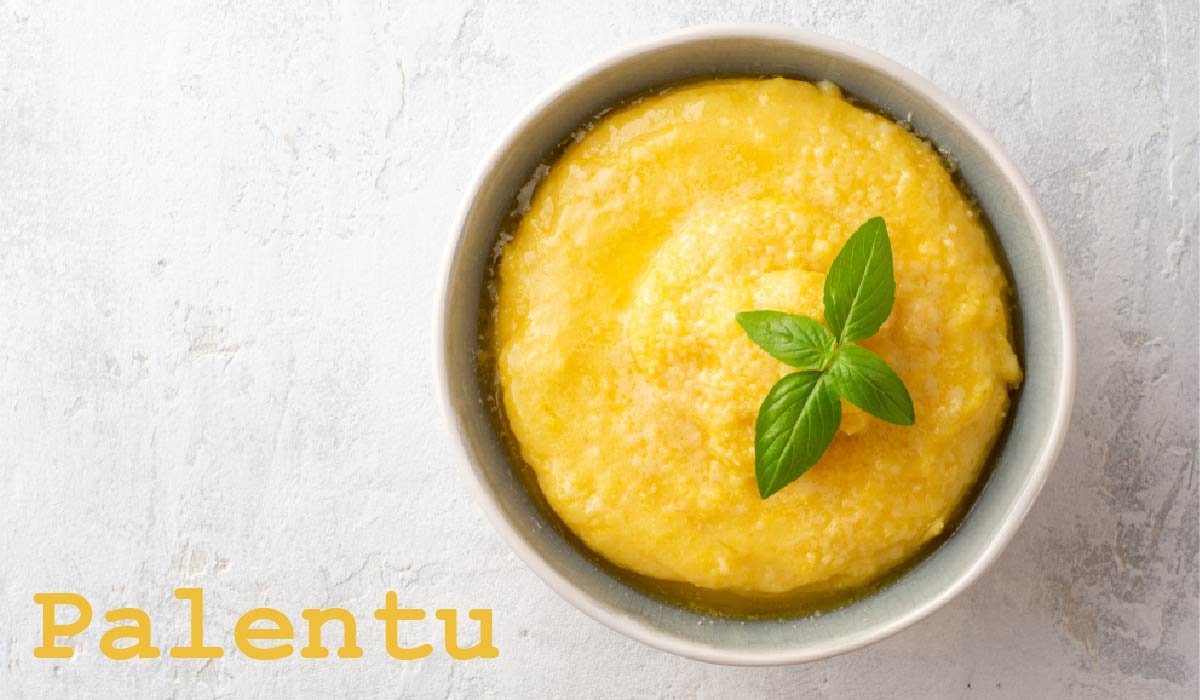Blog
Palentu: The Ultimate Comfort Dish Loved Worldwide

Introduction
Palentu remains relevant in the modern world because it offers a rare combination of comfort, history, sustainability, and culinary versatility at a time when people increasingly seek simpler, wholesome foods with meaningful roots. Whether you call it palentu, polenta, mămăligă, žganci, kačamak, or cuscuz, the concept of boiled cornmeal continues to thrive because it is adaptable, affordable, and satisfying, making it popular among home cooks, gourmet chefs, and food cultures worldwide.
The culinary appeal of palentu lies in its ability to take on the flavors of anything it accompanies—rich stews, roasted meats, grilled vegetables, cheeses, or sweet toppings—while also standing strong as a dish on its own. Today, as people rediscover traditional recipes and seek comfort foods with cultural depth, Palentu offers the perfect blend of nostalgia and modern usefulness.
This article explores everything about palentu: its origins, cooking science, ingredients, global variations, nutritional benefits, cultural symbolism, modern adaptations, and why it continues to endure across centuries.
What Is Palentu?
Palentu is a traditional cornmeal-based dish that has been part of global culinary traditions for centuries, often appearing in kitchens under different names yet maintaining the same comforting essence. Though many confuse it with polenta due to the similar pronunciation and preparation method, palentu represents a broader cultural expression of cornmeal cookery that stretches across Europe, the Mediterranean, Africa, and South America. At its simplest, palentu is made by slowly cooking ground cornmeal in water, broth, or milk until it thickens into a creamy porridge, but what makes it stand out is its dual texture—silky and smooth when served hot, yet firm and sliceable once cooled.
This characteristic allows palentu to be shaped, cut, fried, grilled, and repurposed in numerous delicious ways. Across different regions, people have used the name “palentu” to refer to their own variation of cornmeal porridge, making it a word that carries both regional identity and culinary affection. As a result, pale ntu is not merely a dish; it is a symbol of heritage, creativity, resourcefulness, and the deep connection people have to humble, sustaining foods that have nourished families for generations.
What Exactly Is Palentu?
Palentu is essentially a cornmeal porridge that can be prepared with water, broth, or milk, resulting in a creamy base that thickens as it cooks and transforms depending on how it is served. When enjoyed hot, it is smooth, warm, and spoonable—similar to a comforting porridge—while cooling it causes the starch to firm up, allowing the dish to be sliced, grilled, baked, or fried into golden, crispy pieces. Although many people associate the word “polenta” with Italy, similar dishes exist throughout Eastern Europe, the Mediterranean, and Latin America under different names.
Palentu, while not the most globally recognized term, is used in some regions and households to describe this type of cornmeal dish. It resembles Italian polenta, Balkan žganci, and Romanian mămăligă in texture and concept, but each has its own cultural nuances, preparation techniques, and serving traditions. In essence, the word “palentu” represents both a specific dish and a broader family of cornmeal comforts, reflecting how food names evolve as they travel across regions and cultures.
Historical Origins of Palentu
Ancient Roots Before Corn
The origins of palentu reach far back into ancient cooking traditions, long before corn ever existed in Europe. In ancient Rome and surrounding regions, people consumed porridge-like dishes made from grains such as millet, farro, barley, and wheat. The most notable Roman dish resembling modern palentu was called “puls,” a porridge made by boiling ground grains in water or milk until thick.
These ancient porridges served as everyday sustenance for soldiers, farmers, and families, making grain-based dishes a foundational staple in Mediterranean diets. Although the texture and flavor differed from today’s cornmeal version, the cooking technique and role in society were strikingly similar—simple ingredients transformed through slow cooking into filling, nourishing meals that could feed many people at a low cost.
Corn Arrives in Europe
The transformation of Palentu as we know it began in the 16th century when corn (maize) was brought to Europe from the Americas. Because corn grew well in a variety of climates, produced high yields, and was much cheaper than wheat or barley, European communities adopted it rapidly.
Within decades, cornmeal replaced traditional grains in many regions, giving rise to new dishes that resembled ancient porridges but offered a new flavor, texture, and nutritional profile. This shift birthed different forms of cornmeal porridge across Europe: polenta in Italy, palenta and žganci in the Balkans, mămăligă in Romania, and similar variations across rural regions where corn became a staple crop.
Palentu Across Regions
Across Europe, palentu-style dishes developed unique cultural identities. In Italy, polenta became a widely beloved dish, especially in northern regions where it was paired with meats, cheeses, and sauces. In Croatia, Slovenia, and Serbia, dishes like palenta, žganci, and kačamak became essential in rural living, often eaten with milk, sour cream, or hearty stews.
In Romania, mămăligă evolved into a thick, rustic dish served with sheep cheese, eggs, or meats, reflecting local agricultural traditions. These variations share the same foundation—boiled cornmeal—but each reflects the environment, culture, and history of its people, making palentu a dish with countless regional personalities.
Ingredients and Science of Palentu
Core Ingredients
The base ingredients of palentu are very simple: cornmeal, liquid (usually water, milk, or broth), and salt. However, the final result can vary enormously depending on the grind of the cornmeal (fine or coarse), the cooking time, and any additional ingredients used for flavor or richness. Many cooks enhance palentu with butter, olive oil, cheese, herbs, garlic, or vegetables, allowing it to evolve from a humble porridge into a complex and flavorful dish. This simplicity and flexibility are part of why palentu continues to thrive in both traditional and modern cooking.
The Chemistry: Starch Behavior
The magic of palentu comes from the science of starch. Cornmeal is composed mostly of starch granules that swell and burst when exposed to heat and moisture. This process, known as gelatinization, typically occurs between 60°C and 70°C. During cooking, two components of starch—amylose and amylopectin—behave in ways that determine the dish’s final texture.
Amylose gives structure and firmness, while amylopectin contributes to creaminess and smoothness. When pale ntu cools, the starch molecules realign through a process called retrogradation, which expels moisture and allows the mixture to firm up completely. This scientific phenomenon is what allows palentu to transform from a creamy porridge into a solid block that can be sliced and cooked in many forms.
Impact of Fats and Proteins
Adding fats such as butter, cheese, or olive oil significantly affects the chemistry and texture of pale ntu. Fats coat the starch molecules, reducing stickiness and increasing creaminess, while proteins from cheese (especially casein) interact with the starch to create richer, firmer, and more flavorful results. This is why palentu enriched with butter or cheese feels silkier, denser, and more luxurious compared to versions made solely with water.
Step-by-Step: How to Make Traditional Palentu
Ingredients List
A traditional palentu recipe requires just a handful of ingredients: one cup of cornmeal, four cups of water, broth, or milk, a small amount of salt, and optional additions like butter or cheese for enhanced richness. This basic list makes palentu affordable and easy to prepare even in large quantities.
Cooking Method
To prepare palentu, begin by heating your chosen liquid in a pot until it reaches a gentle boil. Gradually add the cornmeal in a slow, steady stream while whisking constantly to prevent lumps from forming. Once incorporated, lower the heat and allow the mixture to simmer gently for about 20 to 30 minutes, stirring often to ensure even cooking. As the cornmeal absorbs the liquid, the mixture thickens and transforms into a smooth, cohesive dish. At this stage, butter, cheese, or olive oil can be added to enhance flavor. You can serve the pale ntu immediately as a creamy porridge, or pour it into a mold or shallow tray to cool and solidify for later slicing.
Pro Tips
For the best results, use a fine grind for creamier palentu and a coarse grind for a more rustic texture. Stir the mixture frequently at the beginning to prevent lumps, and adjust the ratio of liquid depending on whether you prefer thick and firm or soft and silky pale ntu. A ratio of 4:1 or 5:1 (liquid to cornmeal) is ideal for creamy versions, while slightly less liquid is used for firmer results.
Serving Styles: How Palentu Adapts to Any Table
Soft & Creamy
Soft palentu is perfect as a comforting side dish or base for rich toppings. It pairs beautifully with melted butter, grated cheese, mushroom sauces, hearty stews, or roast meats. In many cultures, it serves the same purpose as mashed potatoes—warm, soft, and ideal for soaking up flavorful sauces.
Cooled & Firm
When cooled, palentu undergoes a transformation that makes it easy to slice into firm pieces. These slices can be fried until crispy, grilled until smoky, or baked until golden, creating a dish that is crunchy on the outside and soft inside. This preparation is popular in Balkan and Italian cuisines and is a great way to repurpose leftover palentu.
Global Style Pairings
Around the world, palentu is paired with an impressive range of ingredients. In the Balkans, it is served with sour cream, beans, or sausage. In Italy, polenta dishes feature combinations like tomato sauce, mushrooms, or braised meats. Romania’s mămăligă is paired with cottage cheese, eggs, or fish. In South America, cornmeal cuscuz may be topped with fruits, sugar, meats, or vegetables. These pairings highlight the vast cultural versatility of palentu and its ability to adapt to local ingredients and tastes.
Nutritional Benefits of Pale ntu
Macronutrients
Palentu is a valuable source of carbohydrates, offering around 30 to 35 grams per cup, making it an excellent energy source for active individuals and families. It is naturally low in fat unless enriched with butter or cheese, and provides a moderate amount of protein (typically 2 to 3 grams per serving), making it a balanced option for many diets.
Micronutrients
Cornmeal contains essential vitamins and minerals, including B vitamins like niacin and thiamine, as well as magnesium, phosphorus, and iron in moderate quantities. These nutrients support metabolic health, energy production, and muscle function.
Dietary Considerations
Because cornmeal is naturally gluten-free, palentu is a safe and delicious option for people with celiac disease or gluten sensitivity. It can also be easily prepared as a vegan dish when cooked with water or vegetable broth and topped with sautéed vegetables. Additionally, when made without heavy fats, palentu is a low-calorie, nutrient-rich meal that fits well into weight-conscious diets.
Palentu Around the World
Europe
In Italy, polenta is served with cheese, sauces, and meats, sometimes forming the centerpiece of entire meals. In Croatia, žganci—similar to palentu—often includes milk or crispy bacon. Romanian mămăligă is traditionally served with brined cheese, sour cream, or eggs. Each variation demonstrates different ways that cornmeal has become woven into local cuisines.
South America
Brazil’s cuscuz is a cornmeal dish that can be prepared sweet or savory, often steamed rather than boiled. It is a staple breakfast in many regions and showcases yet another adaptation of cornmeal traditions across continents.
Africa
In Uganda and other African countries, posho or ugali is a dense cornmeal dish served with vegetables, beans, or meats. Its texture is firmer than many European versions, but the core concept—cornmeal transformed into a nourishing staple—is the same.
USA
Southern grits, while made from hominy rather than regular cornmeal, share the same cooking process and comfort-food appeal. Grits, like palentu, can be creamy or firm and are enjoyed with butter, cheese, or savory toppings.
Palentu in Modern Cuisine
In today’s culinary landscape, palentu has become a beloved ingredient in both fine-dining and everyday cooking. Chefs use it as a canvas for gourmet presentations, pairing it with truffle oil, braised meats, delicate herbs, and vibrant sauces. Street food vendors offer fried or grilled palentu squares as quick, flavorful snacks. Health-conscious diners appreciate pale ntu for its plant-based, gluten-free qualities, making it ideal for vegan meals when combined with vegetable broths and seasonal sautéed vegetables. Modern home cooks frequently use pale ntu as a base in casseroles, layered vegetable bakes, and creative fusion dishes that blend traditional comfort with contemporary flair.
Cultural Symbolism of Palentu
Palentu carries deep cultural meaning in the regions where it has been cherished for generations. In rural communities, it symbolized warmth, simplicity, and togetherness—families gathered around steaming pots after long days of work. Its affordability and sustaining properties made it a symbol of survival and resilience, especially in areas where winters were harsh and resources limited. Over time, pale ntu evolved from a dish associated with poverty to one celebrated in upscale restaurants, illustrating its remarkable culinary duality. Today, pale ntu stands as a bridge between past and present, representing tradition even as modern chefs reinterpret it creatively.
Sustainability and Storage Tips
Eco-Friendly Aspects
Palentu is one of the most environmentally sustainable traditional foods because corn is a high-yield crop that grows easily in many climates and requires relatively low water. The dish itself produces minimal waste, as leftovers can be easily repurposed by cooling, slicing, frying, or baking. With only a few simple ingredients and little processing required, pale ntu is a low-impact meal that aligns well with today’s sustainability goals.
Storage
Soft pate can be refrigerated for up to five days and reheated with added water or broth to restore its creamy texture. Firm palentu stores exceptionally well, becoming even easier to slice after chilling. It can be grilled straight from the refrigerator or frozen for future use. These storage qualities make Palentu ideal for meal-prepping and reducing food waste.
Why Palentu Stands the Test of Time
Palentu endures because it represents the perfect blend of simplicity, adaptability, and cultural richness. It fulfills the human desire for comfort foods while also appealing to those seeking healthier, plant-based meals. Whether enjoyed in rustic kitchens or featured in elegant dining rooms, pale ntu adapts to any environment and holds its place as both an everyday staple and a creative culinary tool. Its ability to transform texture—from soft and creamy to firm and sliceable—makes it one of the most versatile traditional dishes in the world. As global cuisine continues to evolve, pale ntu remains a timeless, beloved food that carries history in every bite.
Final Thoughts
Palentu is far more than a simple cornmeal dish; it is a story of resilience, heritage, and universal human connection to comforting, nourishing food. From the mountains of Croatia to the countryside of Romania, from Italian trattorias to New York’s modern restaurants, pale ntu continues to evolve while maintaining its timeless charm. Whether served warm and creamy with butter or transformed into crispy golden slices, pale ntu offers endless possibilities for creativity and enjoyment. It is a dish that honors the past while embracing the present, making it a treasured recipe that deserves a place in every kitchen.
FAQs
1. What is Palentu made of?
Palentu is made from cornmeal that is slowly cooked in water, milk, or broth until it thickens into a creamy porridge or firm loaf. It can be enjoyed warm and soft or cooled, sliced, and fried or grilled. Simple ingredients like salt, butter, cheese, or herbs are often added for extra flavor.
2. Is Palentu the same as polenta?
Palentu is very similar to polenta, but the name “palentu” is often used in certain regions or cultures. Both dishes are made from cornmeal and cooked the same way, but depending on the country or language, the dish may be called polenta, palentu, mămăligă, or žganci.
3. How do you cook Palentu?
To cook Palentu, bring liquid to a boil, slowly stir in cornmeal, and simmer it for 20 to 30 minutes until thick. Stir regularly to avoid lumps. Once done, you can eat it hot and creamy or let it cool and firm up for slicing and grilling.
4. Is Palentu gluten-free?
Yes, Palentu is naturally gluten-free because it is made from cornmeal, not wheat. This makes it a great choice for people with celiac disease or gluten intolerance. Just be sure to check that all added ingredients like broth or cheese are also gluten-free.
5. What can I serve with Palentu?
Palentu goes well with many foods, such as grilled sausages, beef stew, roasted vegetables, or cheese. You can enjoy it as a creamy side dish or fry the firm version for a crispy treat. It’s a very flexible dish that fits into many meals.
For More Information, Visit Coopermagazine
-

 Celebrity1 year ago
Celebrity1 year agoWho Is Jennifer Rauchet?: All You Need To Know About Pete Hegseth’s Wife
-

 Celebrity1 year ago
Celebrity1 year agoWho Is Mindy Jennings?: All You Need To Know About Ken Jennings Wife
-

 Celebrity1 year ago
Celebrity1 year agoWho Is Enrica Cenzatti?: The Untold Story of Andrea Bocelli’s Ex-Wife
-

 Celebrity1 year ago
Celebrity1 year agoWho Is Klarissa Munz: The Untold Story of Freddie Highmore’s Wife
















